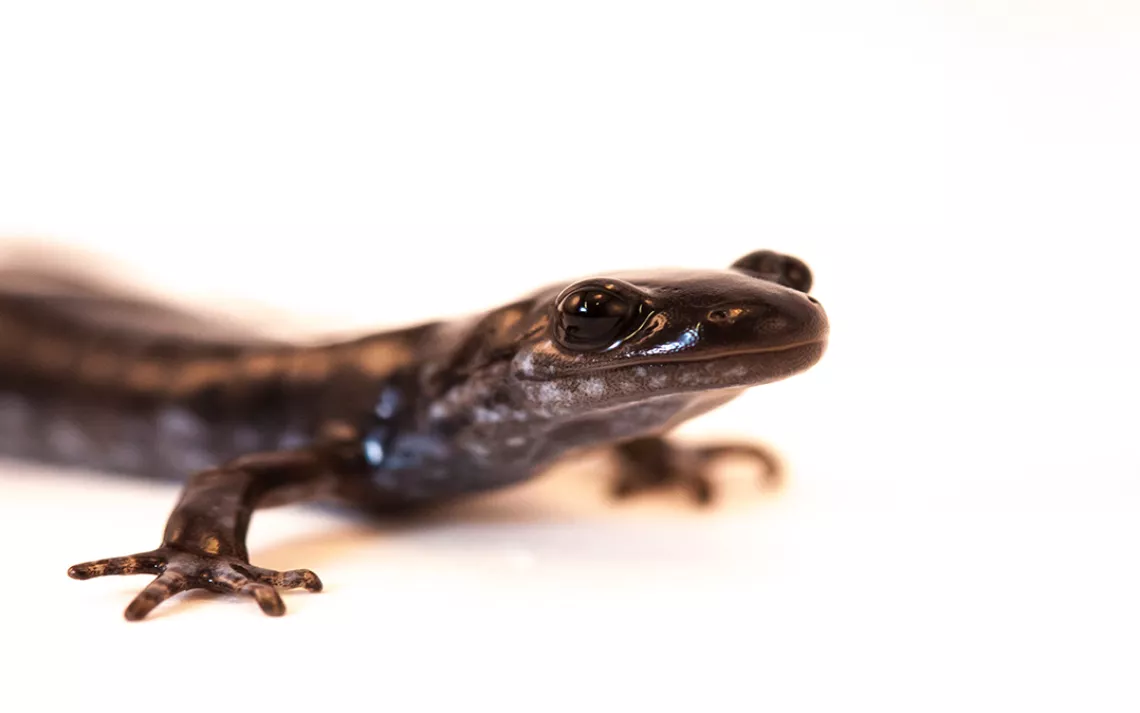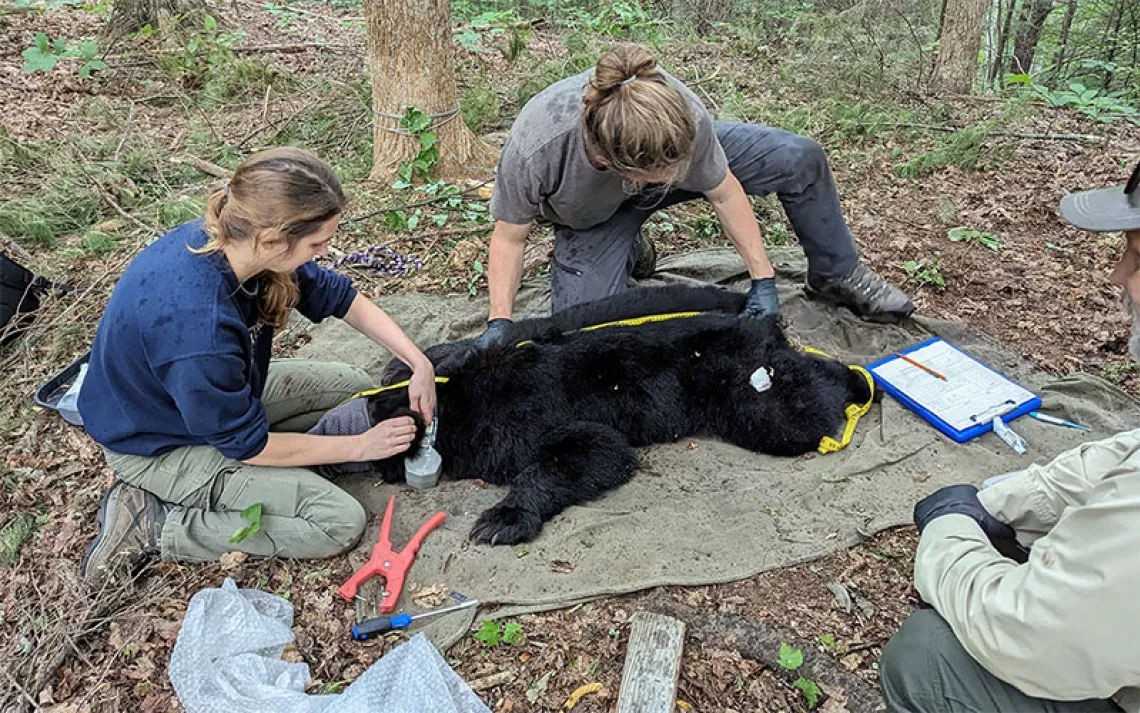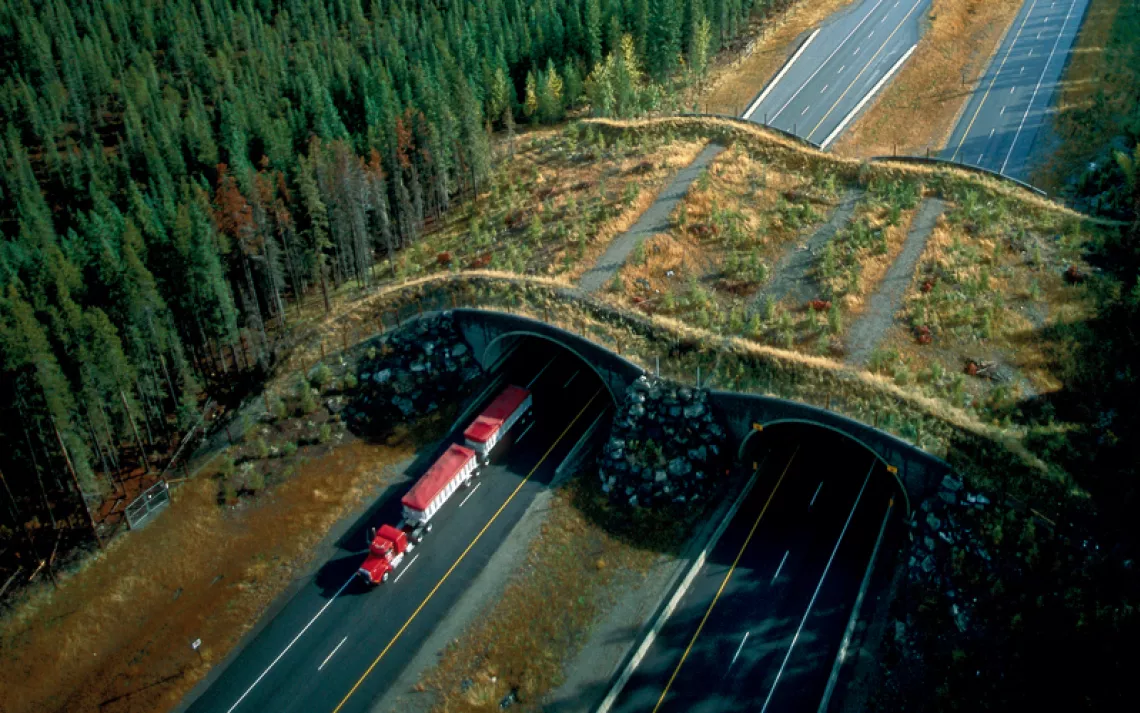Where the Deer and the Salamander Roam
New research shows some mole salamanders make an epic spring journey to find new mating ponds

Photo by Robert Denton
The smartest decision a salamander can make is to stay put. The more they are out in the open and on the move, the more likely a raccoon, crow, or snake will slurp up the little amphibian, or that it will simply dry out and die. So it’s surprising to learn that a recent study found a certain percentage of salamanders will travel for miles—in fact some up to nine miles at a time—to find a new breeding pool. At least, that’s true for Ambystoma texanum, the small-mouth salamander, a species of mole salamander found in the central and southern United States.
“The question we were asking was pretty simple,” says Rob Denton a PhD candidate at Ohio State University and lead author of the study, which appears in the journal Functional Ecology. “How do we figure out how salamanders move across the landscape, especially in agricultural areas since it’s such a grueling habitat?”
Studying salamander movements, however, is pretty tricky. For one, the creatures are small and have sensitive skin, meaning it’s not possible to outfit most species with tracking devices. Marking individual salamanders and then relocating them later is equally frustrating since finding the animals is a crapshoot.
That’s why Denton and his collaborators took a different approach. First, they figured out how long the salamanders could potentially travel by measuring their endurance. Then they analyzed the DNA of various populations in Crawford County, Ohio, to see if the amphibians actually made those journeys in the real world.
To test the endurance of the four-to-seven-inch amphibians, Denton and his crew put them on a small, specially built treadmill (borrowed from another researcher) with Plexiglas sides to keep the animals on the machine. They gently prodded the salamanders to get them to move along the belt, stopping every three minutes to rewet them and test their stamina. By flipping the salamanders over and seeing how long it took to right themselves, they could determine when the critter had reached exhaustion. What they found is that the average small-mouthed salamander could keep going for a little over two hours before bonking. “That’s like a person lightly jogging for 75 miles before wearing out,” Denton says.
Next they tested another group of all-female mole salamanders that reproduce clonally instead of sexually. They found that those salamanders only had one-quarter of the endurance of the sexually reproducing salamanders.
Kicking butt on a treadmill is one thing; actually traveling across the landscape is a different story. So Denton collected DNA samples from the tails of 445 small-mouthed salamanders from different ponds. What he found is that about 4 percent of those had DNA from distant populations, meaning they had walked to their new homes. On average, those salamanders traveled six miles through woods, streams, and agriculture fields to find a new pond and presumably a new set of mates, bearing out the findings from the treadmill. The unisexual or clonal salamanders, on the other hand, only journeyed half that distance.
So why does dispersal among salamanders matter? Evan Grant, a wildlife biologist at the USGS Patuxent Wildlife Research Center who has studied how stream salamanders disperse, says a little genetic mixing between salamander breeding ponds keeps the population healthy. “In general, I think it’s a good idea for there to be some dispersal. Otherwise populations get similar genetically,” he says. “Dispersal spreads advantageous alleles to other populations. There’s kind of a sweet spot. You don’t want too much dispersal and not too little.”
Finding out about how salamanders disperse is also important for conservation of amphibian species, especially since the eastern United States is the world’s salamander hot spot, with the largest known salamander biodiversity. “We’ve always underestimated the ability of these animals to move across the landscape,” says Jarrett Johnson, associate professor of biology at Western Kentucky University, who originally built the salamander treadmill used in the experiment for a study of tiger salamanders in California. “We’re finding out more and more about these animals, and in the genetic data we’re seeing long-distance dispersal events. It helps us understand that though they might not look like it, salamanders can go quite far if they have the motivation to do so.”
Denton agrees that understanding how the animals disperse is important in developing conservation plans and corridors. But he says similar research needs to be conducted on more species to understand the dispersal mechanisms of other types of salamanders. “The reason this type of research is important is that one size does not fit all when it comes to protecting these animals,” he says. “It’s very helpful for us to know what works for one species might not work for another.”
 The Magazine of The Sierra Club
The Magazine of The Sierra Club






